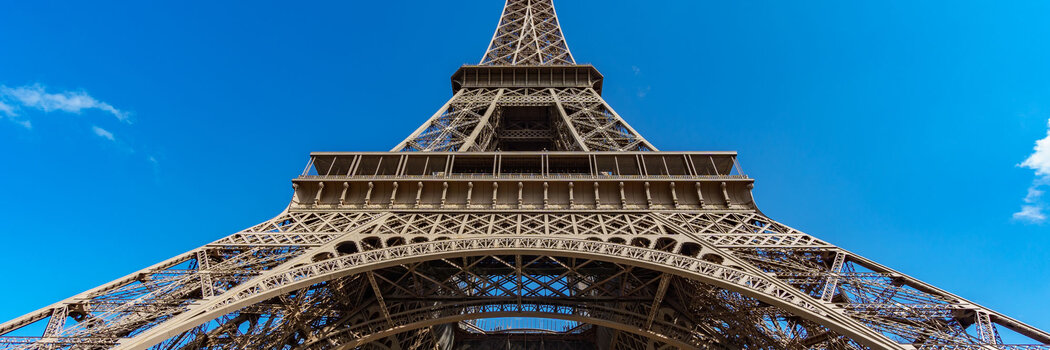Measuring 324 m in height, it stands on a square with 125 m side length over the Champs de Mars. Right from the start, it attracted big names from all over the world and of course from Paris as well. Originally it was to be dismantled in 1909. In contrast to the Parisians, who admired the tower, numerous artists demanded that it should disappear. The possibility of using it for military purposes saved it initially.
The transmitter fitted at the top of the tower played a crucial role during the first World War. From 1910, the tower emitted a time signal and in 1916 it acted as terminal for the first trans-Atlantic radio link; from 1918 on it was used as radio transmitter. Since 1957 it has been used as television tower. Until the Chrysler Building was built in 1930 and the Empire State Building in 1931 in New York, the Eiffel Tower was the highest building in the world.
Long Climb
Long Climb Visitors can reach the top of the Eiffel tower by climbing up the steps or using the lift. The steps, which are accessible to the general public, extend to the 2nd floor at a height of 115 m. Three lifts (in the North, East and West pillar) also extend up to the 1st (56 m) and 2nd floor (115 m). Only one or two of the lifts are ever in use at any one time because of maintenance work. To get to the top at a height of 276 m, visitors have to change lift on the second floor. By mid October of this year, already more than 5.3 million visitors had been counted since the start of the year, which indicates growth of nearly 5% compared to the previous year.
Flocking Tourists
To regulate the flow of tourists and to register the number of people on the platform on the 3rd floor, the entrance and exit areas were fitted with revolving doors. They are connected to the backbone via MICROSENS fiber optic ports. Given the long distances involved and the electromagnetic inter¬ference generated by the lift motors, fiber optic solutions are the ideal transmission medium for this kind of appli¬cation. 70 MICROSENS devices help to count the tourists at the top of the proud landmark every day. The long-standing partner, Amec Spie, was commissioned to install a network with a star-based architecture. As competent integrator with a wealth of know-how and more than 22,000 employees through out France, Amec Spie relies on MICROSENS experience for active media conversion.
Official website of the Eiffel tower: http://www.tour-eiffel.fr











